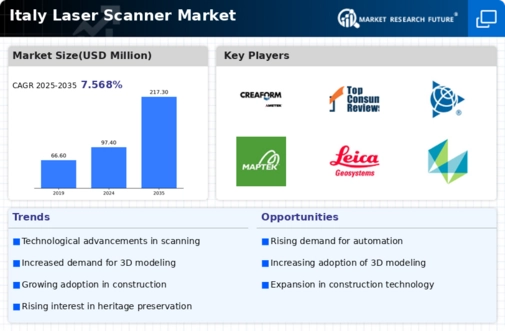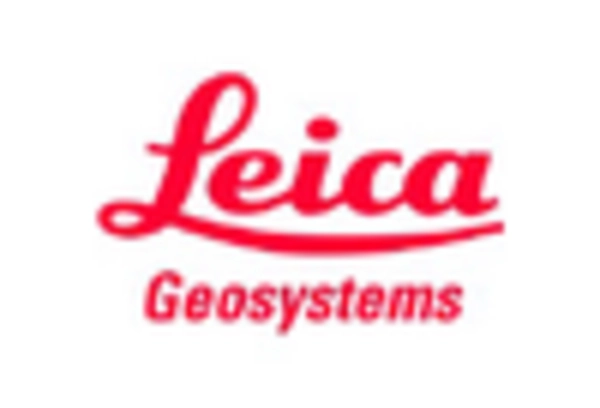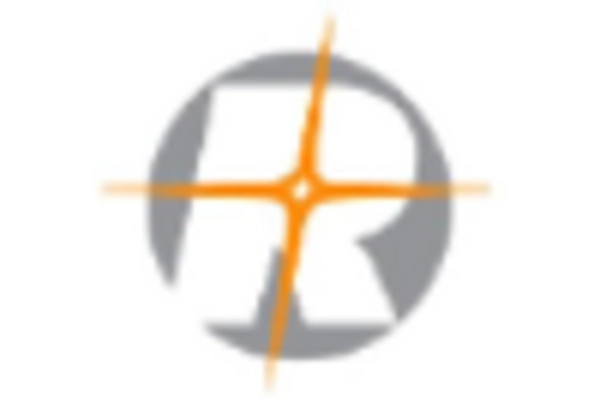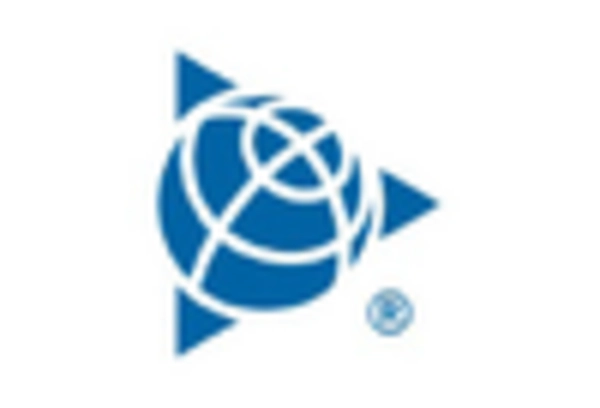Expansion of Infrastructure Projects
Italy's ongoing investment in infrastructure development is significantly impacting the laser scanner market. With numerous projects aimed at modernizing transportation networks, urban development, and public facilities, the demand for accurate surveying and mapping solutions is on the rise. Laser scanners are increasingly utilized for their ability to capture detailed spatial data quickly and efficiently, which is crucial for planning and executing large-scale projects. Recent reports suggest that the Italian government has allocated over €30 billion for infrastructure improvements, further stimulating the need for advanced surveying technologies. This investment not only enhances the operational capabilities of construction firms but also drives the adoption of laser scanning technology, thereby fostering growth in the laser scanner market.
Integration of Laser Scanning with BIM
The integration of laser scanning technology with Building Information Modeling (BIM) is emerging as a key driver for the laser scanner market in Italy. This synergy allows for the creation of highly accurate digital representations of physical spaces, facilitating better project management and collaboration among stakeholders. As the construction industry increasingly adopts BIM methodologies, the demand for laser scanning services is expected to rise correspondingly. Recent studies indicate that the BIM market in Italy is projected to grow at a CAGR of 12% over the next five years, suggesting a parallel increase in the utilization of laser scanning technology. This trend not only enhances the efficiency of construction projects but also positions the laser scanner market as a critical component in the evolution of modern construction practices.
Growing Demand for Precision Engineering
The laser scanner market in Italy is experiencing a notable surge in demand driven by the increasing need for precision engineering across various sectors. Industries such as manufacturing, automotive, and aerospace are adopting laser scanning technology to enhance quality control and streamline production processes. This trend is reflected in the market data, which indicates a projected growth rate of approximately 8.5% annually through 2027. The ability of laser scanners to provide high-resolution 3D data allows for meticulous inspections and measurements, thereby reducing errors and improving overall efficiency. As Italian companies strive to maintain competitive advantages, the integration of advanced laser scanning solutions is becoming essential, thereby propelling the growth of the laser scanner market in the region.
Increased Focus on Safety and Compliance
Safety and compliance regulations in various industries are becoming more stringent, thereby influencing the laser scanner market in Italy. Companies are increasingly required to adhere to safety standards that necessitate accurate documentation and analysis of work environments. Laser scanning technology provides a reliable means to assess compliance with safety regulations by offering precise measurements and detailed visualizations of workspaces. This capability is particularly relevant in sectors such as construction, manufacturing, and energy, where safety is paramount. As organizations strive to mitigate risks and enhance workplace safety, the adoption of laser scanning solutions is likely to increase, contributing to the overall growth of the laser scanner market.
Rising Interest in Cultural Heritage Preservation
The laser scanner market is also benefiting from Italy's rich cultural heritage and the growing interest in preservation efforts. Institutions and organizations focused on heritage conservation are increasingly employing laser scanning technology to create detailed 3D models of historical sites and artifacts. This method allows for precise documentation and analysis, which is vital for restoration projects. The Italian Ministry of Cultural Heritage has recognized the importance of such technologies, leading to increased funding and support for initiatives that utilize laser scanning. As a result, the market is likely to see a rise in demand from cultural institutions, which could account for an estimated 15% of the overall market by 2026, thereby enhancing the laser scanner market's growth trajectory.
















Leave a Comment